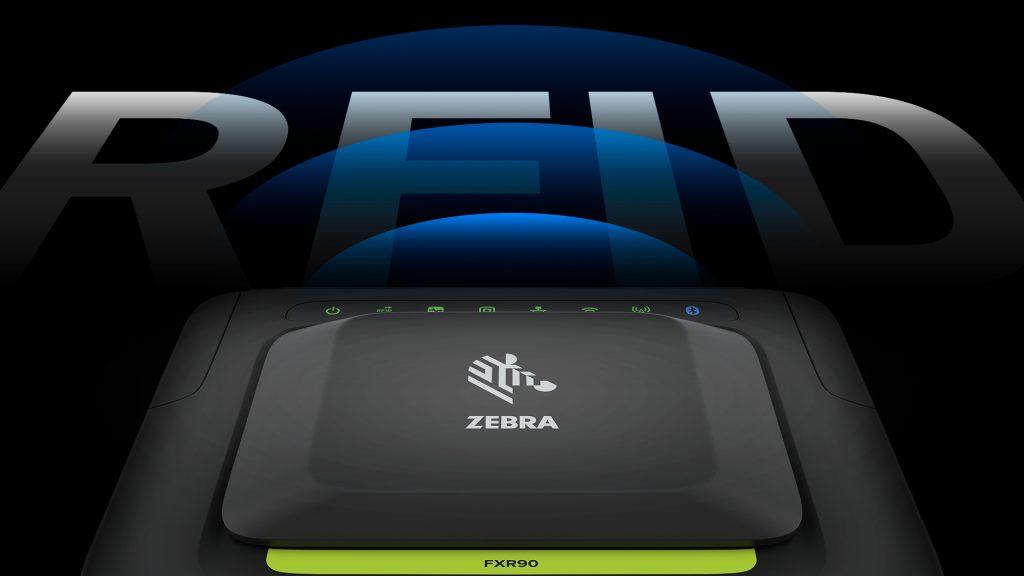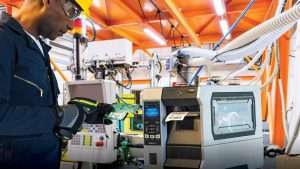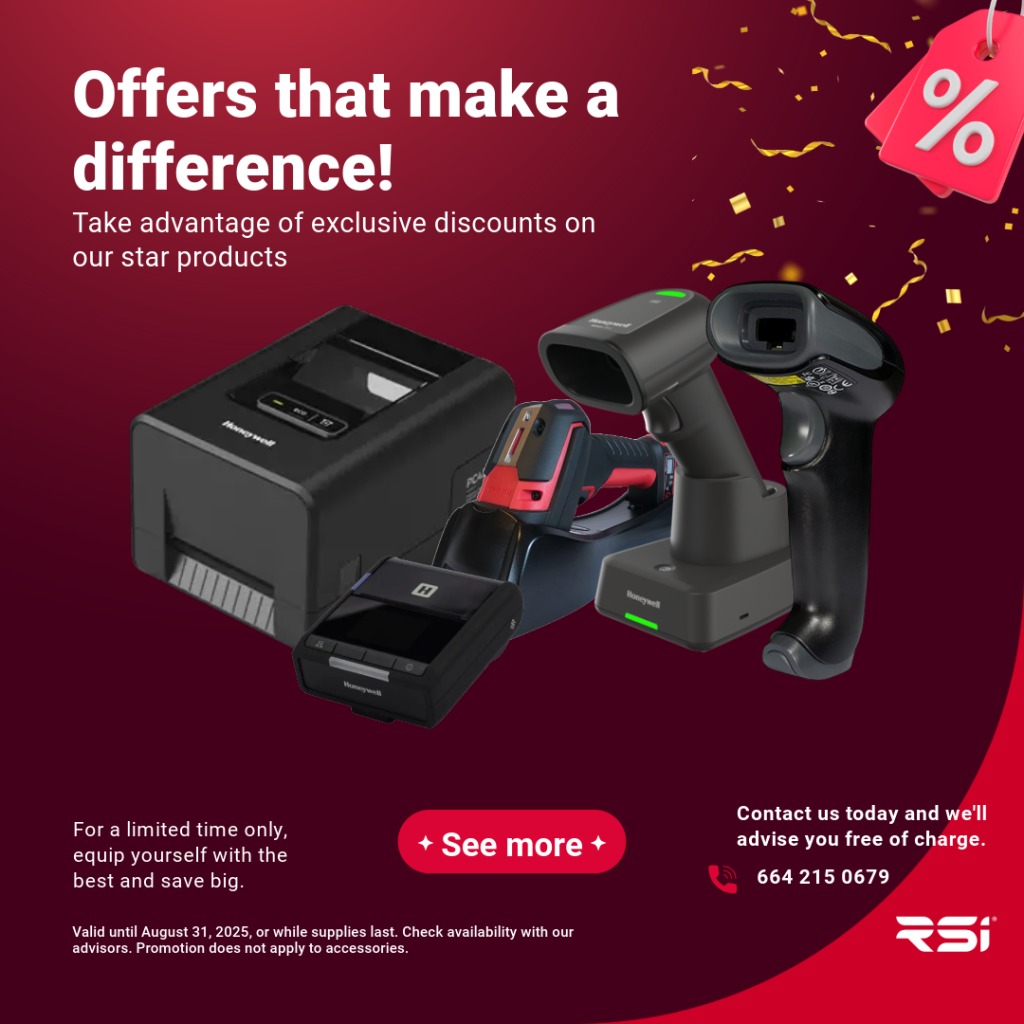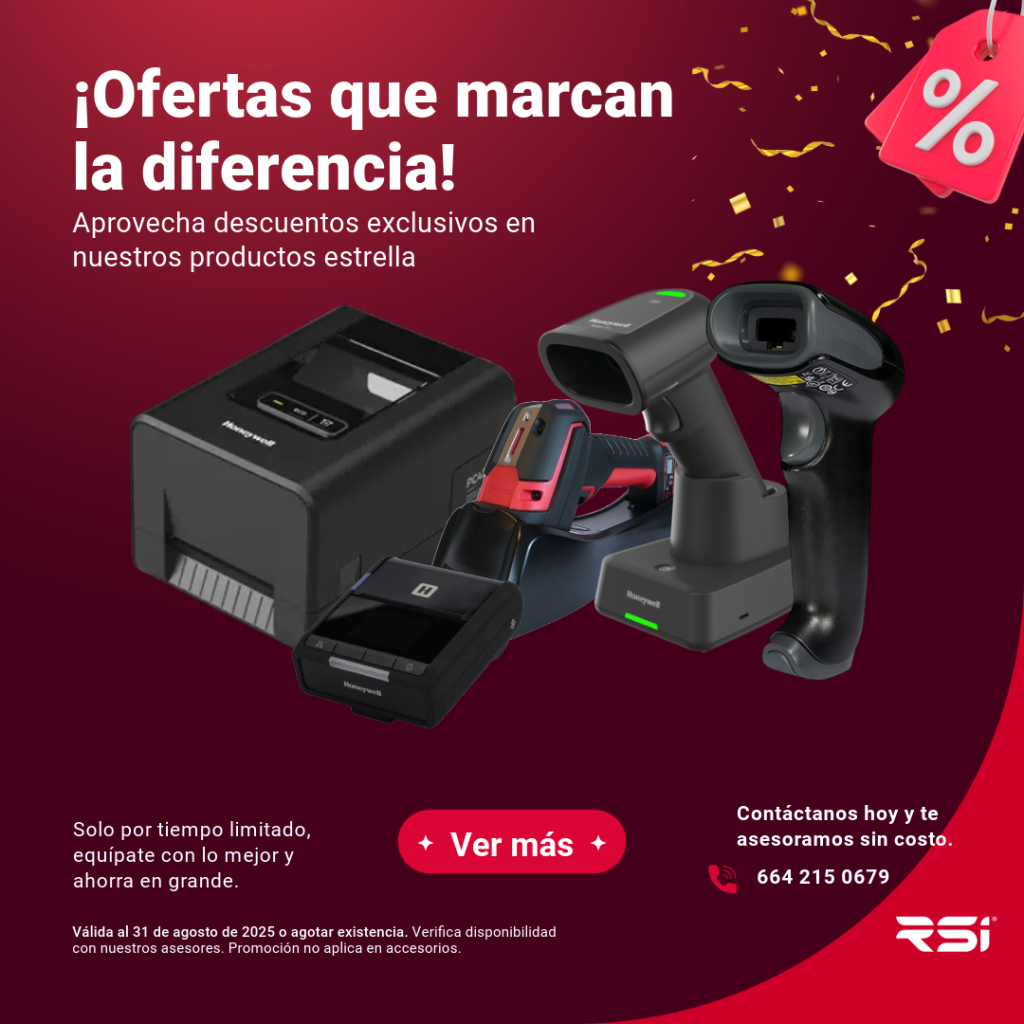Ever wonder how products get tracked through complex supply chains or how contactless payments work? The answer might lie in a tiny chip called an RFID tag. This guide unravels the mysteries of RFID technology, explaining how it works, its various applications, and the advantages and considerations for businesses. Whether you’re a retailer, manufacturer, or simply curious about this innovative technology, this article equips you with the knowledge to understand how RFID can streamline your operations.
What is RFID and how does it work?
RFID, which stands for Radio Frequency Identification, is a technology that uses radio waves to automatically identify objects. Imagine it as a barcode that doesn’t need a direct line of sight to be scanned.
Here’s how it works: An RFID system consists of two main parts:
- Tags: These are miniature chips attached to the objects you want to track. They contain an antenna and a microchip that stores a unique identifier and potentially some additional data.
- Readers: These are devices that emit radio waves and communicate with the tags. When a reader energizes a tag with its radio waves, the tag transmits its stored data back to the reader.
The reader then sends the data to a computer system, where it can be used for various purposes, such as tracking inventory, managing access control, or automating processes. There are two main types of RFID tags:
- Passive tags: These tags get their power from the radio waves emitted by the reader. They are typically smaller and cheaper but have a shorter reading range.
- Active tags: These tags have their own internal battery and can transmit data over a longer distance. They are more expensive but offer greater functionality.
Use cases of RFID
RFID technology has a wide range of applications across various industries in Mexico. Here are some key use cases:
- Inventory Management: Many businesses in Mexico, from retail stores to manufacturing plants, use RFID to track their inventory in real-time. This improves accuracy, reduces stockouts, and optimizes ordering processes. For example, a clothing store in Mexico City can use RFID tags to track the number of items on the shelf, automatically triggering restocking when inventory gets low.
- Asset Tracking: RFID is ideal for tracking valuable assets, like equipment, tools, and even livestock. This helps businesses in Mexico improve asset utilization, prevent loss or theft, and ensure proper maintenance schedules. For example, a construction company in Monterrey can use RFID tags on their heavy machinery to track their location on the job site and ensure they are properly serviced.
- Supply Chain Management: RFID can streamline the entire supply chain in Mexico, from manufacturing to distribution. By tagging products at each stage, companies can gain real-time visibility into their movement, identify bottlenecks, and optimize delivery routes. For example, an avocado producer in Mexico can use RFID tags to track their shipments from the farm to grocery stores in the US, ensuring optimal storage conditions and reducing spoilage.
- Product Authentication: RFID tags can be used to combat counterfeiting, a major concern in Mexico. These tags store unique identifiers that can be verified to ensure the authenticity of a product. This is important for industries like pharmaceuticals, luxury goods, and electronics. For example, a tequila distillery in Jalisco can use RFID tags on their bottles to prevent the sale of counterfeit products and protect their brand reputation.
- Merchandise Reception: Automating the receiving process with RFID saves time and improves accuracy in warehouses and distribution centers across Mexico. Pallets and individual items can be tagged, allowing for faster identification and streamlined inventory updates.
- Expedition Management: RFID streamlines logistics and shipment tracking in Mexico. Tags on packages and containers enable real-time tracking throughout the entire delivery process, improving efficiency and customer satisfaction.
- NFC Solutions: While not exactly RFID, NFC (Near Field Communication) is a related technology with shorter range applications. It’s often used in smartphones for contactless payments or data exchange. In Mexico, NFC is being explored for mobile ticketing in public transportation and secure access control for buildings.
These are just a few examples of how RFID is transforming various industries in Mexico. As the technology continues to develop, we can expect even more innovative applications to emerge in the future.
What industries use RFID technology?
Here are a few examples of industries that use RFID technologies:
- Tracking medical equipment and supplies: Hospitals and clinics in Mexico use RFID tags to track valuable medical equipment, like surgical instruments and infusion pumps. This helps ensure their availability during procedures, reduces loss or theft, and simplifies maintenance scheduling.
- Blood and tissue sample tracking: RFID ensures the proper handling and traceability of blood and tissue samples throughout their lifecycle, improving patient safety and reducing errors.
- Patient identification and records management: RFID wristbands can be used to identify patients and access their electronic medical records, streamlining the admission process and improving care coordination.
Retail
- Inventory management and stock control: As mentioned earlier, RFID allows retailers to track inventory in real-time, optimize ordering, and prevent stockouts.
- Loss prevention and asset tracking: RFID tags can be used to deter shoplifting and track high-value merchandise within the store.
- Supply chain visibility: RFID helps retailers track the movement of goods throughout the supply chain, ensuring timely deliveries and reducing shrinkage.
- Self-checkout and contactless payments: Some stores in Mexico are implementing RFID tags on products to enable self-checkout and contactless payments, improving customer experience and checkout speed.
- Vehicle assembly line tracking: RFID tags are used to track car parts and components throughout the assembly process, ensuring they are correctly installed and improving production efficiency.
- Inventory management of car parts: Dealerships and manufacturers can use RFID to track spare parts and car components in their warehouses, s
Rastreo de vehículo y manejo de flota: La tecnología RFID es usada para rastrear la locación y el movimiento de los vehículos en flota, mejorar la optimización de rutas, eficiencia de gasolina, y en general manejo de logística.
- Vehicle tracking and fleet management: RFID technology can be used to track the location and movement of vehicles in a fleet, improving route optimization, fuel efficiency, and overall logistics management.
- Anti-theft and access control: Some cars in Mexico are equipped with RFID tags in their keys or windshields for enhanced security and access control.
- Component and product tracking: Manufacturers can use RFID to track electronic components and finished products throughout the production process, ensuring quality control and preventing counterfeiting.
- Inventory management and asset tracking: RFID helps track high-value electronics within warehouses and retail stores, reducing theft and loss.
- Product lifecycle management: RFID tags can store information about a product, such as its manufacturing date and warranty details, facilitating product recalls and after-sales service.
- Inventory management and traceability: RFID helps track food and beverage products throughout the supply chain, ensuring freshness, preventing contamination, and facilitating recalls if necessary.
- Temperature and quality control: Some RFID tags can be equipped with sensors to monitor temperature and other environmental factors during transportation and storage, ensuring food safety and quality.
- Expedited checkout and self-service kiosks: Grocery stores in Mexico are exploring RFID tags on products to enable faster checkout and self-service options for customers.
- Payment solutions: Similar to retail, some stores might utilize RFID tags for contactless payments at checkout.
This list provides a glimpse into how diverse industries in Mexico are leveraging RFID technology to improve efficiency, security, and overall operations. As RFID continues to evolve, we can expect even more innovative applications to emerge across various sectors in the future.
Advantages of using RFID
There are several compelling reasons why RFID technology is gaining traction across various industries in Mexico. Here are some key advantages:
- Improved Accuracy and Efficiency: RFID automates data collection, eliminating the need for manual scanning and reducing human error. This leads to more accurate inventory counts, faster checkout times, and streamlined operations.
- Real-time Visibility and Tracking: RFID provides real-time tracking of objects, allowing businesses to monitor their location and status throughout the supply chain or within a facility. This improves transparency, facilitates better decision-making, and reduces shrinkage.
- Enhanced Security and Loss Prevention: RFID tags can be programmed with unique identifiers, making it difficult to counterfeit them. This helps deter theft and unauthorized access, improving security for valuable assets and products.
- Reduced Labor Costs: By automating tasks like inventory management and asset tracking, RFID reduces the need for manual labor, leading to cost savings for businesses.
- Improved Data Management: RFID allows for the collection of additional data beyond simple identification, such as temperature or product expiry dates. This data can be used for better inventory control, quality assurance, and overall operational efficiency.
- Durability and Readability: RFID tags are typically more durable than barcodes and can be read from a distance and even through certain materials. This makes them ideal for harsh environments or situations where line-of-sight scanning is not possible.
- Scalability and Integration: RFID systems can be easily scaled to accommodate growing businesses or complex operations. They can also be integrated with existing enterprise resource planning (ERP) systems, providing a holistic view of inventory and operations.
While there is an initial investment required for RFID technology, the long-term benefits in terms of efficiency, accuracy, and security often outweigh the initial costs.
Disadvantages of RFID
Despite its numerous advantages, RFID technology also has some limitations to consider:
- Cost: Implementing an RFID system can be expensive, especially compared to traditional barcode systems. The cost includes the tags themselves, readers, and any necessary software integration.
- Read Range Limitations: The reading range of RFID tags can vary depending on the type of tag and reader. Passive tags typically have a shorter range compared to active tags. This can limit their applicability in certain situations.
- Susceptibility to Interference: Radio waves used in RFID can be susceptible to interference from certain materials like metal or liquids. This can affect the accuracy and reliability of reading tags.
- Security Concerns: While RFID tags can enhance security, there are potential vulnerabilities. If not properly secured, RFID data could be intercepted by unauthorized readers.
- Privacy Considerations: The use of RFID tags raises privacy concerns, especially when attached to individuals or personal belongings. It’s important to ensure proper data security and user consent for tracking applications.
- Limited Readability of Multiple Tags: If multiple RFID tags are close together, reader accuracy can be compromised. This can be an issue in situations where a large number of tagged items are present in a confined space.
Overall, RFID technology offers significant advantages for businesses in Mexico. However, it’s crucial to weigh the potential drawbacks and ensure the system aligns with your specific needs and budget. Consulting with an RFID specialist can help determine if this technology is the right fit for your operations.
RFID frequencies
FID systems operate on different radio frequencies, each with its own advantages and disadvantages:
- Low Frequency (LF): LF (125-134 kHz) offers a short reading range (a few centimeters) but is less susceptible to interference and works well with metal objects. It’s commonly used for access control systems (key cards) and animal tracking (microchips).
- High Frequency (HF): HF (13.56 MHz) has a moderate reading range (up to a meter) and is suitable for contactless payments (credit cards) and secure identification badges.
- Ultra High Frequency (UHF): UHF (860-960 MHz) offers a long reading range (several meters) and is ideal for tracking inventory in warehouses or managing logistics in supply chains.
The best frequency for your application depends on the required reading range, the materials involved, and the level of security needed. For instance, a clothing store might use UHF tags for real-time inventory tracking throughout the store, while an access control system for a building might use a secure HF tag.
Lior Rubin
Strategic Partner RSI Mexico











